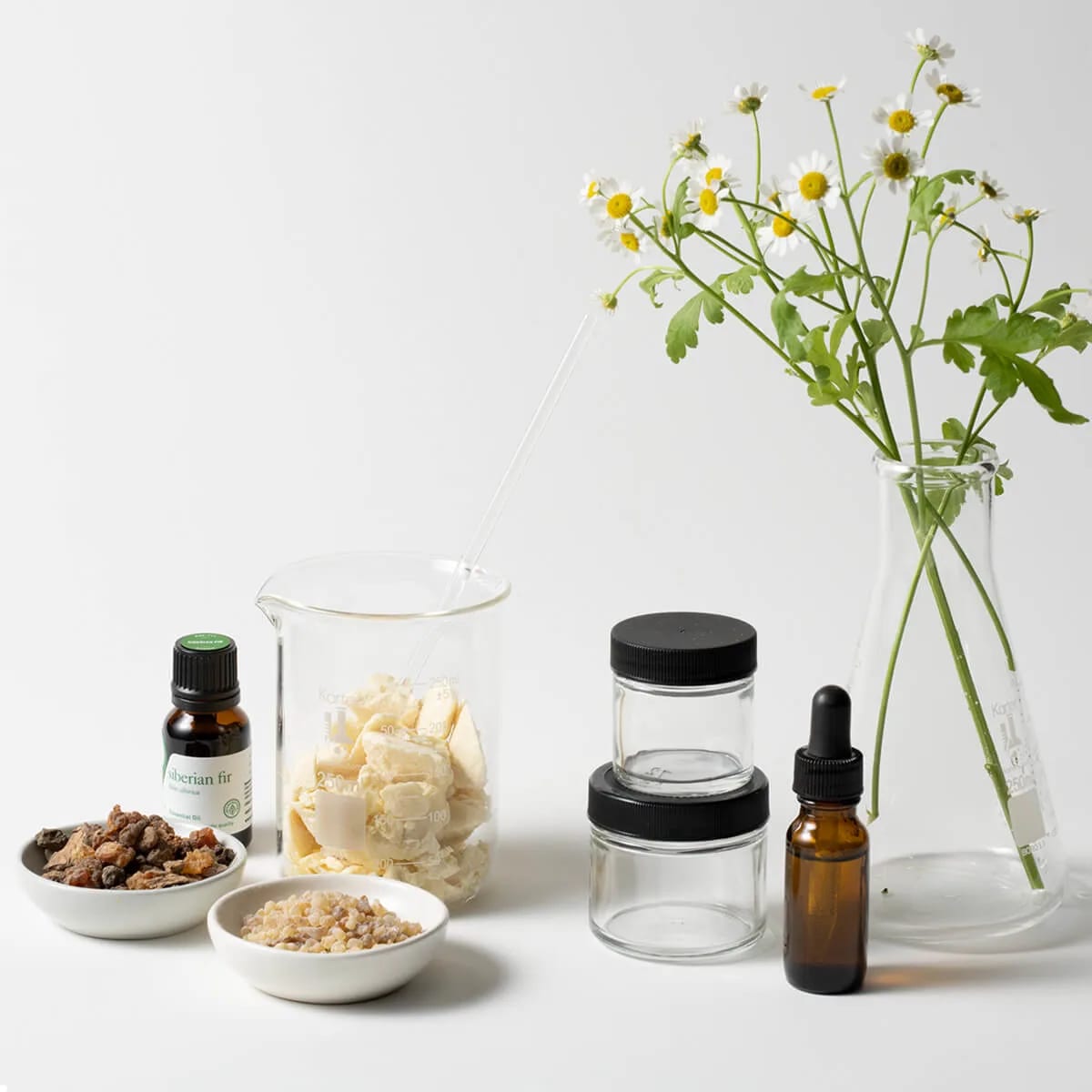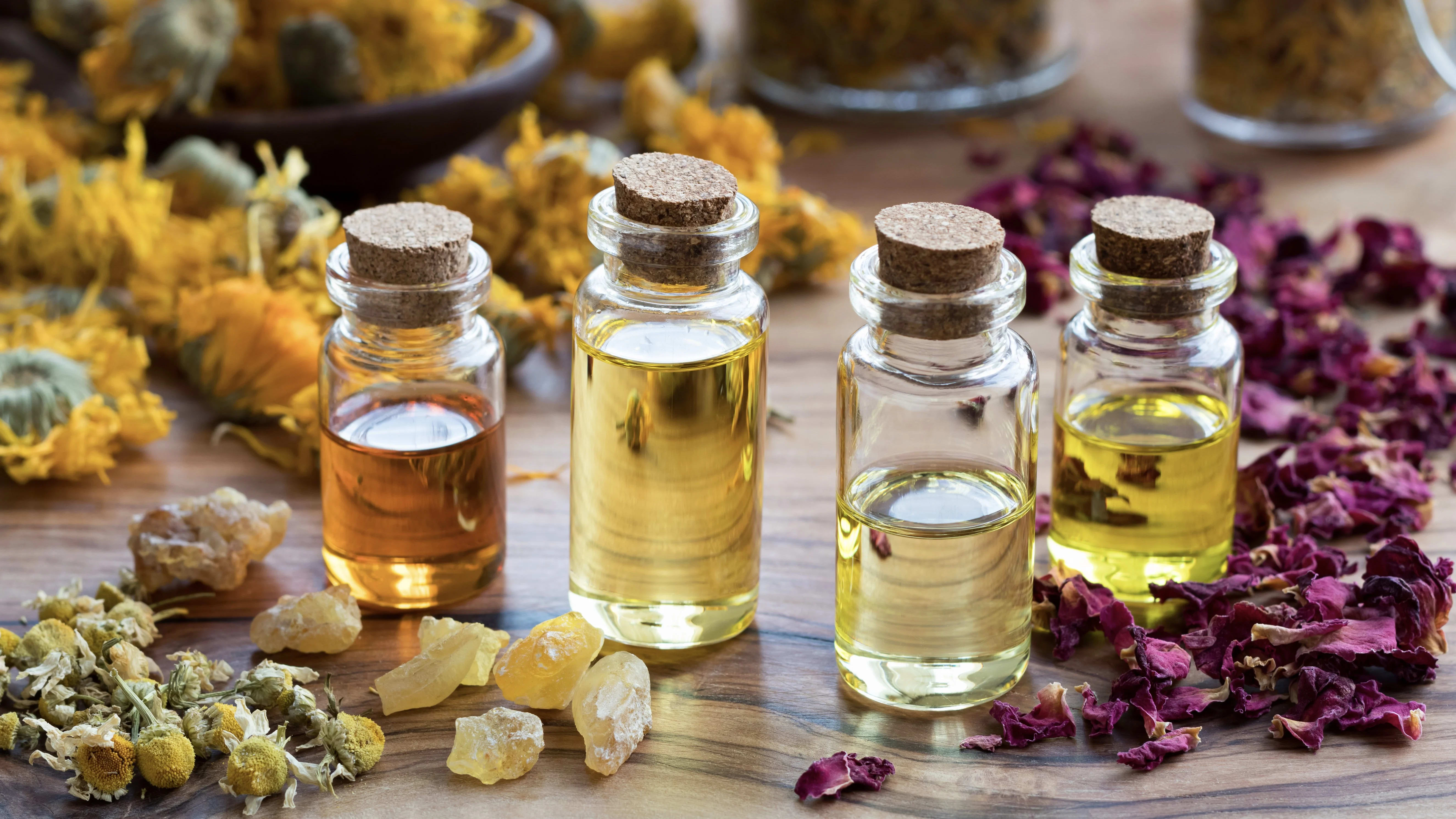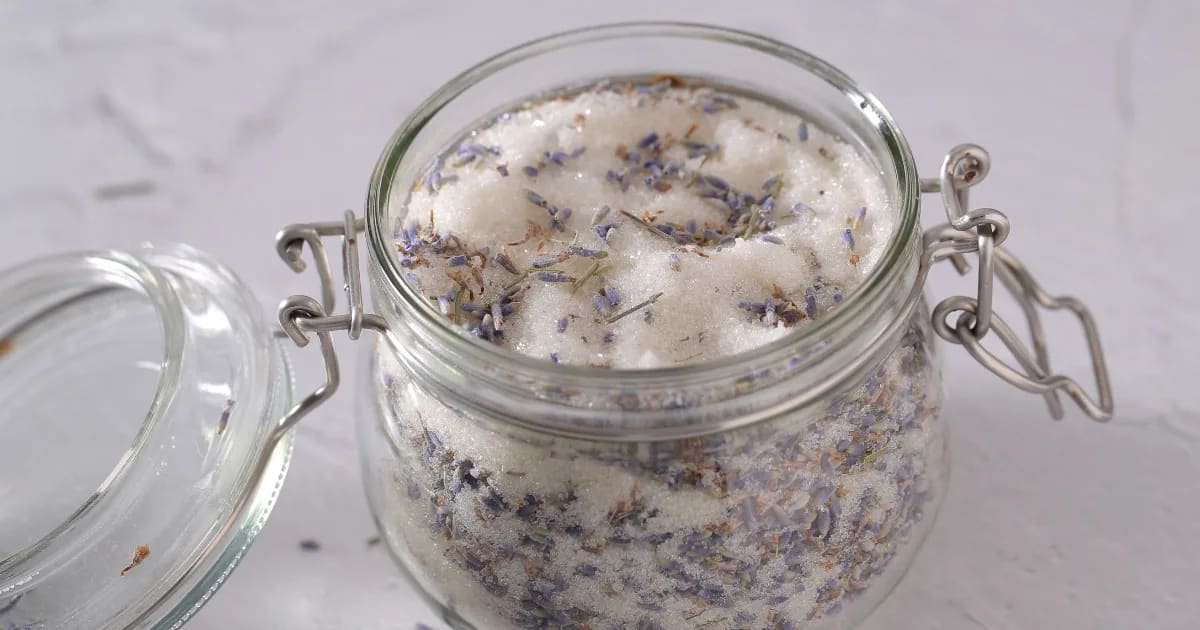Part 2: 8 Essential Oils to Make Your Own Natural Cleaners

Why I Clean with Essential Oils
I recently wrote about an eye-opening experience I had that reminded me of the importance of using natural cleaning products. (In a nutshell, a cleaning professional used conventional products in my home, and I experienced some unpleasant reactions. Read that story here.)
The truth is, natural homemade cleaners are better for our health. They work as well as store-bought conventional products—without exposing us to harsh chemicals that can cause allergies, reactions, or more serious health issues.
In this post, I will discuss which essential oils you can use to clean your home naturally—and why they work.
Many essential oils contain powerful components that fight microbes while supporting our well-being (instead of stressing our immune systems, as harsh ingredients in conventional products can do).
Join me as I share about several oils or specific categories of oils (such as citruses) that I turn to most often for cleaning!
Top 8 Essential Oils for Natural Cleaning
Tea Tree oil
Tea Tree oil (Melaleuca alternifolia) stands in a class of its own among oils that fight microbes. That’s partly because it’s one of the few oils that contains terpinen-4-ol. Thanks to this component, one 2006 study says, “contemporary data clearly show that the broad-spectrum activity of TTO [Tea Tree Oil] includes antibacterial, antifungal, antiviral, and antiprotozoal activities.” (Learn more about Tea Tree and get a Foot Fungus Solution.)
Lemongrass oil
If you look at a lab report showing the components present in Lemongrass oil (Cymbopogon citratus), you will see both neral and geranial in high percentages. When these two components appear side by side, we call them “citral.” One study tested citral against 12 strains of fungi . . . and it successfully inhibited all 12! The high level of citral in Lemongrass makes it one of my favorite oils for antifungal cleaning.
Oils rich in citral can irritate the skin and mucous membranes. This isn’t a major concern in cleaning products, just be sure to wear cleaning gloves to protect your hands. (In topical blends, I recommend using about 2 to 3 drops of Lemongrass per 1 fl oz (30 ml) of carrier. There is also a lesser known variety of Lemongrass that’s very skin friendly. Learn about it here!)
Conifer oils
Have you noticed that a lot of conventional cleaners are scented like pine? Besides that evergreen trees smell wonderful, conifer oils—such as Hemlock (Tsuga canadensis) and Siberian Fir (Abies sibirica)—are full of potent monoterpenes, like α- and β-pinene. Research has shown that these components fight a number of bacteria, viruses, and fungi.
Each conifer oil has a slightly different evergreen aroma. You can choose to clean your home with just about any of them, and feel confident that you’re reducing germs on surfaces and in the air.
Citrus oils
This is another group of oils that excels in cleaning power! Each of the citrus oils—from Sweet Orange (Citrus sinensis) to Lemon (Citrus limon) to Bergamot (Citrus bergamia) and beyond—contains a very high percentage of d-limonene. This monoterpene is known to disrupt the cell walls of bacteria, and even to enhance white blood cell production. Not only does it help remove dangerous microbes from our environments . . . it boosts our bodies’ natural defenses against them.
Bee Balm oil
In the recent past, I wrote a series of posts about this beautiful gem of an oil, Bee Balm (Monarda fistulosa). This post details how it fights bacteria, viruses, and fungi—thanks to its main component, carvacrol. It’s so effective, I even rely on it to protect small wounds from infection.
Oils rich in carvacrol can irritate the skin and mucous membranes. Again, this isn’t such a concern in cleaning products, just be sure to wear cleaning gloves. (If you’re using Bee Balm topically, use only 5 to 6 drops per 1 fl oz (30 ml) of carrier.)
Clove Bud oil
No list of essential oils for natural cleaning would be complete without an oil rich in eugenol! Eugenol has been shown to destroy bacteria, fungi, and viruses (including the cold sore and flu virus) . . . and Clove Bud oil (Syzygium aromaticum) offers us a high percentage of eugenol. Like d-limonene, this component can support our immune health. Try combining Clove Bud and your favorite citrus oil for a fresh, warm, spicy cleaner that makes your home smell amazing!
Oils rich in eugenol can irritate the skin and mucous membranes. This isn’t not a significant concern in cleaning products, but be sure to wear cleaning gloves to protect your skin. (If you’re using Clove Bud topically, use only 2 to 3 drops per 1 fl oz (30 ml) of carrier.)
Peppermint oil
Who doesn’t love the fresh, sweet scent of Peppermint oil (Mentha × piperita)?! Menthol, the main component in Peppermint, can inhibit bacteria (including E. coli), viruses (including the cold sore virus), and fungi (like Candida albicans). Plus its invigorating scent can lift your mood and help you feel alert!
Peppermint oil can irritate the skin and mucous membranes. This isn't a major concern in cleaning products, just be sure to wear cleaning gloves. (In topical blends, use 5 to 12 drops of Peppermint per 1 fl oz (30 ml) of carrier.)
Thyme ct thymol oil
There are several varieties of Thyme essential oil. While most are excellent antimicrobials, my favorite for cleaning is Thyme ct thymol (Thymus vulgaris ct thymol). Thanks to the phenol thymol, Thyme ct thymol has actions against many microbes, including multidrug-resistant bacteria. In fact, the word “thyme” comes from the Greek “thymon,” which means “to fumigate.” (Thyme is also excellent for pain relief!)
Oils rich in thymol can irritate the skin and mucous membranes. This isn’t a significant concern in cleaning products, but be sure to wear cleaning gloves to protect your hands. (If you’re using Thyme ct thymol topically, use only 5 to 6 drops per 1 fl oz (30 ml) of carrier.)
How to Use These Oils to Clean Your Home
All these oils contain powerful antimicrobial components, making them excellent germ-busters! You can choose which ones you find most aromatically appealing and use them in a variety of products.
I want to point out that in natural cleaning blends, I use higher drop counts than for therapeutic recipes.
For example, I would only use 2 drops of Clove Bud in 1 fl oz (30 ml) of a pain relief oil. But I would feel comfortable using triple that amount for a tub and tile scrub. For cleaning applications, we want a strong concentration of the oils to effectively destroy germs.
In general, I aim for a 3% dilution in surface cleaners—which is about 15 to 18 drops per 1 fl oz (30 ml) of carrier.
What Other Ingredients Do You Need?
What carriers should you blend these oils with to make your own natural cleaners?
All you need are a few basic ingredients…
Castile soap: You might be surprised how effective natural Castile soap is at getting rid of dirt and grime!
High-proof alcohol: Look for 190 proof to be sure you’re sanitizing your surfaces. Everclear works well.
Baking soda: This will give you excellent scrubby action for surfaces like sinks, tubs, and tile.
Cornstarch: Stabilizes the mixture and gives extra scrubbing power.
White vinegar: With its mild acidic properties, vinegar helps break down grime, mineral deposits, and grease. It can also destroy some microbes.
My Takeaway
I am truly inspired—and I hope you are too! Equipped with this newfound knowledge, you're ready to begin transforming your home into a cleaner and healthier sanctuary.
But remember, understanding which oils to use is just the beginning. In our next post, we’ll shift from theory to action. Prepare to roll up your sleeves as we explore practical, easy-to-follow DIY cleaning recipes. These aren’t just instructions; they’re gateways to making your home a delightfully fresh space.
So, stay tuned! Our next blog will delve into tangible ways to ensure your home is a safe, aromatic haven for you and your family. Let's make this journey together!
Next Steps for You!
I am passionate about this topic, and would love to help you create a healthier, all-natural home, free of harsh products.
Join me on the next step on this journey—learning more about natural cleaning, as well as making your own body products, skin care, and wellness blends—I invite you to join our popular online course, Aromatherapy for Natural Living.
This course offers a wealth of practical techniques to empower you in using essential oils safely and effectively in every area of your life. You’ll learn invaluable skills to support a healthier, more sustainable lifestyle.

Component Blending
References
Battaglia, S. (2019) The Complete Guide to Aromatherapy (Third Edition) Vol I: Foundations & Materia Medica. Zillmere, QLD, Australia. Black Pepper Creative Party, Ltd.
Carrasco, F. R., Schmidt, G., Romero, A. L., Sartoretto, J. L., Caparroz‐Assef, S. M., Bersani‐Amado, C. A., & Cuman, R. K. N. (2009). Immunomodulatory activity of Zingiber officinale Roscoe, Salvia officinalis L. and Syzygium aromaticum L. essential oils: evidence for humor‐and cell‐mediated responses. Journal of Pharmacy and Pharmacology, 61(7), 961-967. https://doi.org/10.1211/jpp.61.07.0017
Carson, C. F., Hammer, K. A., & Riley, T. V. (2006). Melaleuca alternifolia (tea tree) oil: a review of antimicrobial and other medicinal properties. Clinical microbiology reviews, 19(1), 50-62.
Da Silva AC, Lopes PM, de Azevedo MM, Costa DC, Alviano CS, Alviano DS. (2012) Biological activities of a-pinene and ß-pinene enantiomers. Molecules 2012 17, 6305–16.Han, Y., Sun, Z., & Chen, W. (2019). Antimicrobial Susceptibility and Antibacterial Mechanism of Limonene against Listeria monocytogenes. Molecules (Basel, Switzerland), 25(1), 33. https://doi.org/10.3390/molecules25010033
Lang, G. and Buchbauer, G. (2012) A review on recent research results (2008-2010) on essential oils as antimicrobials and antifungals. A review. Flavour and Fragrance Journal 27, 13-39.
Pattnaik, S., Subramanyam, V. R., & Rath, C. C. (1994). Effect of essential oils on the viability and morphology of Escherichia coli (SP-11). Microbios, 84(340), 195-199.
Pattnaik, S., Subramanyam, V. R., Bapaji, M., & Kole, C. R. (1997). Antibacterial and antifungal activity of aromatic constituents of essential oils. Microbios, 89(358), 39–46.
Raphael TJ, Kuttan G. (2003) Immunomodulatory activity of naturally occurring monoterpenes carvone, limonene, and perillic acid. Immunopharmacol Immunotoxicol. May;25(2):285-94. doi: 10.1081/iph-120020476. PMID: 12784919.
Schuhmacher, A., Reichling, J., & Schnitzler, P. (2003). Virucidal effect of peppermint oil on the enveloped viruses herpes simplex virus type 1 and type 2 in vitro. Phytomedicine : international journal of phytotherapy and phytopharmacology, 10(6-7), 504–510. https://doi.org/10.1078/094471103322331467
Solórzano-Santos, F., & Miranda-Novales, M. G. (2012). Essential oils from aromatic herbs as antimicrobial agents. Current opinion in biotechnology, 23(2), 136-141.
Tragoolpua, Y. and Jaatisatienr, A. (2007) Anti-herpes simplex virus activities of Eugenia caryophyllus (Spreng.) Bullock & S. G. Harrison and essential oil, eugenol. Phytotherapy Research 21, 12, 1153-1158
Wu, S., Patel, K. B., Booth, L. J., Metcalf, J. P., Lin, H. K., & Wu, W. (2010). Protective essential oil attenuates influenza virus infection: an in vitro study in MDCK cells. BMC complementary and alternative medicine, 10(1), 69.
Zore, G., Thakre, A., Abdulghani, M., Bhosle, K., Shelar, A., Patil, R., Kharat, K., & Karuppayil, S. (2022). Menthol Inhibits Candida albicans Growth by Affecting the Membrane Integrity Followed by Apoptosis. Evidence-based complementary and alternative medicine : eCAM, 2022, 1297888. https://doi.org/10.1155/2022/1297888





